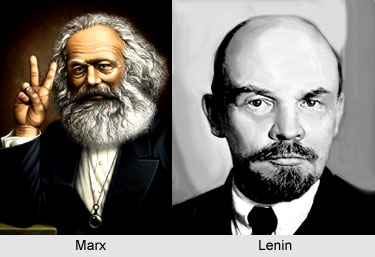 The terms Left and Right, as a political term was first introduced in France during the French Revolution to distinguish the Pro Revolutionaries (the Left) from the anti revolutionaries (the Right). The terms acquired wider connotation after the industrial revolution and the rise of the Socialist and s the Communist thought.
The terms Left and Right, as a political term was first introduced in France during the French Revolution to distinguish the Pro Revolutionaries (the Left) from the anti revolutionaries (the Right). The terms acquired wider connotation after the industrial revolution and the rise of the Socialist and s the Communist thought.
The first and the foremost evil effects of the first World war was the financial devastation. Financial burdens and the rising prices of the daily necessities led to famine. The imperialist-capitalist domination did not even adopt any steps to secure the common s mass. Hence the s politico-economic condition of the contemporary period led to the growths of the Leftist Movement. The revolutionary ideas of Marx and Lenin was extremely alluring and appealing to the Indian Intellectuals and the political leaders. The philosophy of Marx , Lenin imbued the Indian National leaders with a new ideology with socio-economic content. Gandhiji`s slogan for Swaraj and Swadeshi and his attempt to give it a national color gave a new orientation to the trend of the political movement. The Leftist tendency began to guide the national political movement. Even the peasants and the workers were drawn to the mainstream of national life. The new development provided favorable condition for the inauguration of the organized and ideologically inspired socialist movement. A section of educated middle class people who s became unemployed in the British dominance lost their faith in the liberal politics of the 19th century liberalism. Hence the emerging ideas of the new socialist ideologies guided by the Leftist philosophy influenced this group of educated middle class. Moreover the non-violent and weak policy of Gandhiji no longer appeal to the people. The radicals demanded for a formidable resistance against the British. Government. The radicals also emphasized the attainment of Swaraj.
Thus the above conditions were responsible for the growth of Leftist movements in India.



















